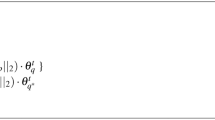Abstract
Watershed transform has been widely used in medical image segmentation. One fundamental problem with it is over-segmentation. There are mainly two approaches to deal with this problem: hierarchical segmentation and segmentation with markers. The markers, either automatically extracted or interactively generated, are mostly used in the homotopy modification of morphological gradients prior to the watershed segmentation. Most of the current techniques does not incorporate domain knowledge of the data. In this paper, we propose a two-step marker-controlled watershed segmentation algorithm with simple domain knowledge incorporated: (1) Modified image foresting transform (IFT) algorithm is used to produce the initial segmentation; (2) The marker-controlled watershed region merging process is incorporated with domain knowledge. A min-cut criterion for region merging is proposed. This approach is effectively applied to the interactive 3D heart chamber partitioning.
We are thankful to Dr. Chenyang Xu and Dr. Yiyong Sun for helpful discussions.
Preview
Unable to display preview. Download preview PDF.
Similar content being viewed by others
References
Suri, J.: Computer vision, pattern recognition and image processing in left ventricle segmentation: the last 50 years. Pattern Analysis and Applications 3, 209–242 (2000)
Pham, D., Xu, C., Prince, J.: A survey of current methods in medical image segmentation. Annual Review of Biomedical Engineering 2, 315–337 (2000)
Soille, P.: Morphological Image Analysis. Springer, Heidelberg (1999)
Riddell, C., Brigger, P., Carson, R., Bacharach, S.: The watershed algorithm: a method to segment noisy pet transmission images. IEEE Transactions on Nuclear Science 46, 713–719 (1999)
Lantuejoul, C., Beucher, S.: Use of watersheds in contour detection. In: Proc. Int’l. Workshop on Image Processing, Real-Time Edge and Motion Detection/Estimation, Rennes, France (1979)
Najman, L., Schmitt, M.: Geodesic saliency of watershed contours and hierarchical segmentation. IEEE Transactions on PAMI 18, 1163–1173 (1996)
Meyer, F., Beucher, S.: Morphological segmentation. Journal of Visual Communication and Image Understanding 1, 21–46 (1990)
Vincent, L., Soille, P.: Watersheds in digital spaces: an efficient algorithm based on immersion simulations. IEEE Transactions on PAMI 13, 583–598 (1991)
Rivest, J., Beucher, S.: Marker-controlled segmentation: an application to electrical borehole imaging. Journal of Electronic Imaging 1, 136–142 (1992)
Haris, K., Efstratiadis, S., Maglaveras, N., Katsaggelos, A.: Hybrid image segmentation using watersheds and fast region merging. IEEE Transaction on Image Processing 7, 1684–1699 (1998)
Meyer, F.: An overview of morphological segmentation. International Journal of Pattern Recognition and Artificial Intelligence 15, 1089–1118 (2001)
Roerdink, J.B.T.M., Meijster, A.: The watershed transform: definitions, algorithms and parallelization strategies. Fundamenta Informaticae 41, 187–228 (2001)
Lotufo, R., Falcao, A.: The ordered queue and the optimality of the watershed approaches. In: Math. Morphology and its Applications to Image and Signal Processing, vol. 18, pp. 341–350. Kluwer, Dordrecht (2000)
Nguyen, H., Worring, M., van den Boomgaard, R.: Watersnakes: Energy-driven watershed segmentation. IEEE Trans. on PAMI 25, 330–342 (2003)
Mangan, A., Whitaker, R.: Partioning 3d surface meshes using watershed segmentation. IEEE Transactions on Visualization and Computer Graphics 5 (1999)
Falcao, A., Stolfi, J., Lotufo, R.: The image foresting transform: theory, algorithms, and applications. IEEE Transactions on PAMI 26, 19–29 (2004)
Felkel, P., Wegenkittl, R., Bruckschwaiger, M.: Implementation and complexity of the watershed-from-markers algorithm computed as a minimal cost forest. In: Proc. Eurographics (2001)
Cates, J.: Itk application: segmentation editor (2003), http://www.itk.org
Author information
Authors and Affiliations
Editor information
Editors and Affiliations
Rights and permissions
Copyright information
© 2005 Springer-Verlag Berlin Heidelberg
About this paper
Cite this paper
Xue, X. (2005). Interactive 3D Heart Chamber Partitioning with a New Marker-Controlled Watershed Algorithm. In: Bebis, G., Boyle, R., Koracin, D., Parvin, B. (eds) Advances in Visual Computing. ISVC 2005. Lecture Notes in Computer Science, vol 3804. Springer, Berlin, Heidelberg. https://doi.org/10.1007/11595755_12
Download citation
DOI: https://doi.org/10.1007/11595755_12
Publisher Name: Springer, Berlin, Heidelberg
Print ISBN: 978-3-540-30750-1
Online ISBN: 978-3-540-32284-9
eBook Packages: Computer ScienceComputer Science (R0)




